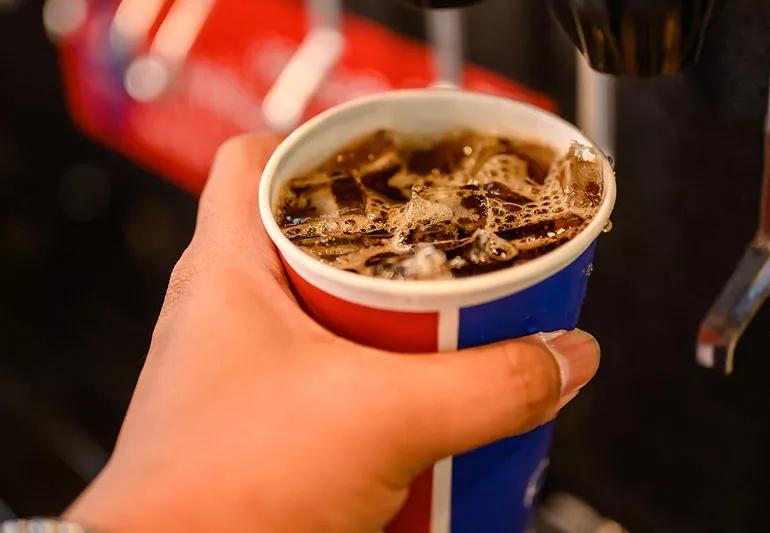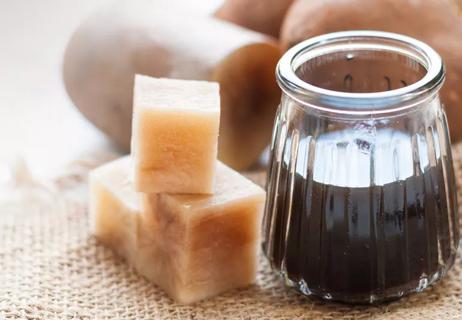How to cope when your stomach says no to fruit

You thought you were doing the healthy thing by making a fruit smoothie. But now your stomach is screaming. Could fructose intolerance be the culprit?
Advertisement
Cleveland Clinic is a non-profit academic medical center. Advertising on our site helps support our mission. We do not endorse non-Cleveland Clinic products or services. Policy
Fructose is a simple sugar. It’s naturally found in fruits and some vegetables. For people with fructose intolerance, an innocent wedge of watermelon or a handful of raisins can be a total day wrecker.
“Fructose intolerance is defined by a constellation of symptoms including flatulence, bloating, diarrhea and abdominal pain,” says gastroenterologist Alberto Rubio Tapia, MD. In other words, it stinks. Find out if fructose intolerance could be causing your discomfort.
The term “fructose intolerance” can be a bit confusing. That’s because it refers to two different conditions, with very different outcomes:
If you have dietary fructose intolerance, cells in your intestine don’t absorb fructose as they should. There aren’t good estimates of how many people have it, says Dr. Rubio Tapia. But it’s fairly common.
In people with dietary fructose intolerance (sometimes called fructose malabsorption), eating foods high in fructose can lead to uncomfortable symptoms, including:
This is a genetic condition in which people are born without an enzyme that breaks down fructose. Without this enzyme, they can’t digest fructose at all.
Advertisement
Symptoms show up soon after babies start eating their first solid foods. These babies typically show signs including:
Unlike dietary fructose intolerance, hereditary fructose intolerance can cause serious illness. Undigested fructose can build up in the body, damaging the liver and kidneys. If someone with the disorder keeps eating fructose, it can eventually lead to seizures, coma and organ failure.
Genetic testing can confirm a diagnosis of hereditary fructose intolerance. People who have the condition should work with a nutritionist or dietitian to avoid fructose altogether. By cutting out the sugar, they can lead healthy, active lives.
Unfortunately, diagnosing dietary fructose intolerance isn’t always simple. Symptoms can sometimes overlap with other conditions, such as irritable bowel syndrome. “There’s no single test we can do to be 100% sure,” says Dr. Rubio Tapia.
Doctors can perform a fructose breath test to measure how much methane and hydrogen a patient breathes out after drinking a liquid with fructose. That isn’t completely conclusive, but it can point doctors toward a diagnosis.
Your healthcare provider will also ask about your eating patterns to look for clues. It can help to keep a food log of your symptoms so you can track whether they show up after high-fructose meals.
For people with dietary fructose intolerance, there is no one-size-fits-all solution, says Dr. Rubio Tapia. “Most people can tolerate some fructose, but everyone has a different sensitivity to it.”
If you suspect fructose intolerance, your doctor will probably recommend an elimination diet. For several weeks, you won’t consume any fructose. Then you can slowly begin reintroducing fructose-containing foods to find out how much you can tolerate without symptoms.
“It’s helpful to work with a dietitian during this process to find what works and make sure you’re still getting adequate nutrition,” he continues.
Most fruits contain fructose, but there are exceptions. And some non-fruit foods have hidden fructose. High-fructose corn syrup is a common sweetener found in everything from yogurt to soda, so it’s important to read labels.
Common high-fructose foods include:
Advertisement
Fortunately, some fruits fall on the lower end of the fructose scale. Some people with dietary fructose intolerance have luck with these lower-fructose picks:
“Some people may be able to tolerate certain fruits better than others. Listen to your body,” Dr. Rubio Tapia encourages. It might take some trial and error, but your happy stomach will thank you.
Advertisement
Learn more about our editorial process.
Advertisement

High fructose corn syrup is a common sweetener in packaged foods and can contribute to weight gain and inflammation

Erythritol is found in a range of ‘diet,’ ‘sugar-free’ and ‘keto-friendly’ foods — but research has linked it to heart attack and stroke

Although allulose is an FDA-approved sugar substitute, more research is needed to understand its safety

Studies and the FDA say this herbaceous alternative is safe in moderation, so go ahead and sprinkle away!

Xylitol in processed food can increase risk of heart attack and stroke — but there’s no danger in xylitol in oral care products

All-natural, plant-based and low-calorie, but it can also cause some serious digestive discomfort

Fruit is the best option for a healthy sweetener, but limit refined sugar and artificial sweeteners

Babies can get congested easily, but you can calm their cough by keeping them hydrated, using nasal drops and running a humidifier

Weight loss may cause loose, sagging skin and muscle loss to your rear

Several conditions, like vitiligo and fungal infection, can cause a loss of pigmentation, leading to white spots or patches on your skin